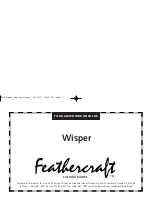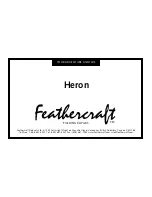
3/21/2017
Sabre 30 Owners Manual
35/81
16:03 AFTER STARTING ENGINE: Each time after starting engine it is important to
immediately check the following:
1. Check for normal oil pressure. Shut down engine if normal oil pressure is not
present within 15 seconds of starting.
2. Check immediately for sea water flow through the transom exhaust port.
3. If oil has just been changed, stop the engine and check crankcase oil level. This
is important as it may be necessary to add oil to compensate for oil which fills internal
oil passages and the oil filter.
4. If transmission fluid has just been changed, check this level also.
5. Be aware of engine operating temperature periodically during operation.
CAUTION: NEVER SHUT OFF BATTERY SWITCH WHILE THE ENGINE IS RUNNING AS SERIOUS ALTERNATOR
DAMAGE WILL RESULT.
16:04 STOPPING THE ENGINE: Before stopping the engine it should be allowed to idle for
a few minutes while in neutral. This will help dissipate some of the heat from
operation.
16:05 OIL CHANGE: Change oil and other engine fluids according to the recommendations
in the engine owner's manual. Check oil in the reverse gear to avoid damage to the gears
and increase clutch life. Warming up the engine as described in Section 16:06, before
draining the oil will facilitate clutch life.
16:06 ENGINE CONDENSATION: At all times, regardless of frequency of operation, it is
not good practice to operate the engine for only a short period of time. Whenever the
engine is used it should be kept running for at least 15 minutes after it has warmed up to
full operating temperature. Using the engine for just a few minutes does not warm the
engine sufficiently to overcome normal condensation, especially in cold weather.
This will result in internal corrosion of the engine, and is the main cause of sticky
valves. The engine warranty does not cover this misuse of the engine.
16:07 ENGINE LAYUP: If the engine is not used for a month or so, it is well to "Fog"
the engine with oil through the air intake, and to place oil in the cylinders as described
in the engine manual. This is necessary to overcome the effects of salt air backing up
the exhaust systems and into the cylinders through an open exhaust valve.
16:00 ENGINE SPECIFICATIONS AND OPERATING INSTRUCTIONS (Cont'd)
16:08 ENGINE CLEANOUT: It is recommended practice to occasionally run the engine at
full power for a minimum of five minutes to clean out moisture and carbon accumulations.
16:09 CRUISING SPEED: A onethird throttle setting will provide a cruising speed of 5
1/2 knots; whereas full throttle will provide a maximum speed of only just over 6 knots
due to the hull speed limitations of a boat this size. Do not abuse the engine and the
boat by driving the engine excessively hard.
16:10 SHIFT LEVER LOCATION: Volvo engines should be left in forward and Westerbeke
engines should be left in reverse when sailing. Always leave engine in neutral when not
sailing and during winter storage.
16:11 FOLDING PROPELLERS: Putting the gear shift lever into forward or reverse should
only be done while the engine is idling. Changing gear at higher R.P.M. can cause damage
because of the great stress which occurs when the blades fold out. If, after engaging the
engine in forward, unusual vibrations occurs, it may be caused from one propeller blade
remaining closed or partly opened. If this occurs, shift into reverse at idle speeds and
accelerate slightly if possible. This should free the blades for use. (Refer to Section
17:04 on folding propellers.)
Summary of Contents for Sabre 30
Page 53: ...3 21 2017 Sabre 30 Owners Manual 53 81 STEERING WHEEL RUDDER AND WHEEL ASSEMBLY...
Page 55: ...3 21 2017 Sabre 30 Owners Manual 55 81 DECK HARDWARE RIGGING GENOA TRACK INSTALLATION...
Page 57: ...3 21 2017 Sabre 30 Owners Manual 57 81 DECK HARDWARE RIGGING CHAINPLATE ASSEMBLY...
Page 70: ...3 21 2017 Sabre 30 Owners Manual 70 81 WIRING DIAGRAMS LEGEND...















































